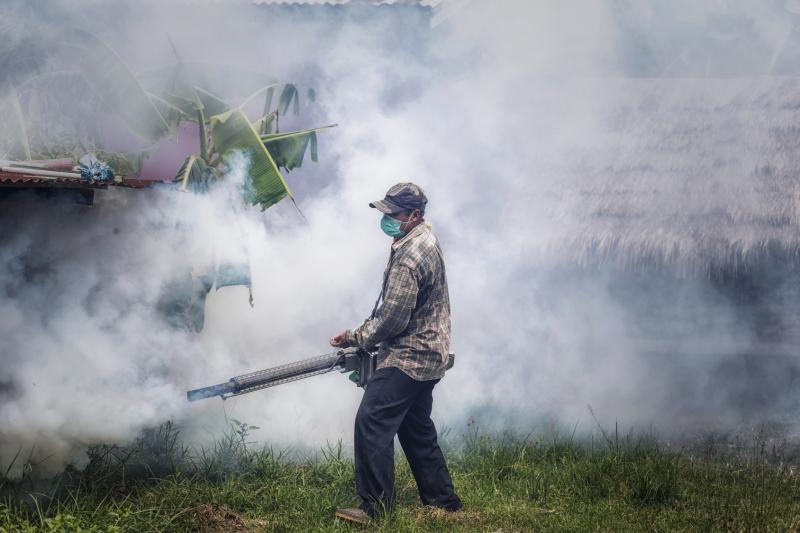 Exposure to Naled has stirred some controversy in the recent past.
Exposure to Naled has stirred some controversy in the recent past.Blood concentrations of organochlorines (OC), particularly β-hexachlorocyclohexane (β-HCH), increase the risk of non-Hodgkin lymphoma (NHL), according to a recent study in Singapore and China.
The researchers prospectively assessed the relationship between blood OC concentrations and NHL risk in Asia, where there is high historical exposure to OC pesticides. Their findings support the suggestion that environmental exposure to HCH may be have carcinogenic consequences.
In the 167 NHL patients enrolled (mean age, 57±7 years; 62 percent female), the mean β-HCH concentration was 5,670 ng/g lipid. It was the second most concentrated OC pesticide, following p,p’-dichlorodiphenyldichloroethylene (p,p’-DDE), which was present in their blood at a mean level of 8,750 ng/g lipid. [Int J Cancer 2020;1466:839-849]
In 167 healthy controls (mean age, 57±8 years; 62 percent male), p,p’-DDE similarly had the highest concentration (8,070 ng/g lipid), followed by β-HCH (5,480 ng/g lipid).
OCs seemed to play an important role in NHL risk. In particular, individuals in the highest tertile of β-HCH concentrations were at a significantly higher risk of developing the malignancy than their lowest-tertile counterparts (odds ratio [OR], 1.8, 95 percent confidence interval [CI], 1.0–3.2; p-trend=0.049). Excluding cases of lymphoid leukaemia did not attenuate this effect (OR, 1.9, 95 percent CI, 1.0–3.5; p-trend=0.04).
Adjusting for other OCs, including polychlorinated biphenyl congeners, did not negate, and even strengthened, the interaction between β-HCH and overall NHL risk. There was evidence that age modified this interaction. Exposure to β-HCH increased NHL risk in individuals aged >58 years (OR, 3.0, 95 percent CI, 1.2–7.5; p-trend=0.01) but not in those ≤58 years old (OR, 1.0; 95 percent CI, 0.5–2.4; p-trend=0.92).
Other OCs analysed, such as p,p’-DDE (OR, 1.1, 95 percent CI, 0.6–1.8), did not appear to have a significant effect on the risk of NHL.
The present findings suggest that “environmental exposure to HCH may be associated with risk of NHL and adds some evidence that β-HCH may itself be a carcinogen,” the researchers said.
In the present study, the researchers included participants enrolled from the Shanghai Woman Health Study, the Shanghai Cohort Study and the Singapore Chinese Health Study. Blood levels of OCs were compared to Western cohorts, such as the CLUE I and Nurse’s Health Study in the US, and the Norwegian Janus cohort.
“To the best of our knowledge, this is the first study that has evaluated associations between blood levels of OCs and risk of NHL in Asia,” the researchers said. “The blood concentrations of p,p’-DDE and β-HCH were markedly higher in the Shanghai cohorts than in several Western cohorts, despite blood collection periods up to almost three decades later.
“Further evaluation of these associations, particularly in understudied Asian populations that have OC exposure characteristics that differ from the West, would be informative to further our understanding of the lymphomagenic potential of these ubiquitous compounds,” they added.